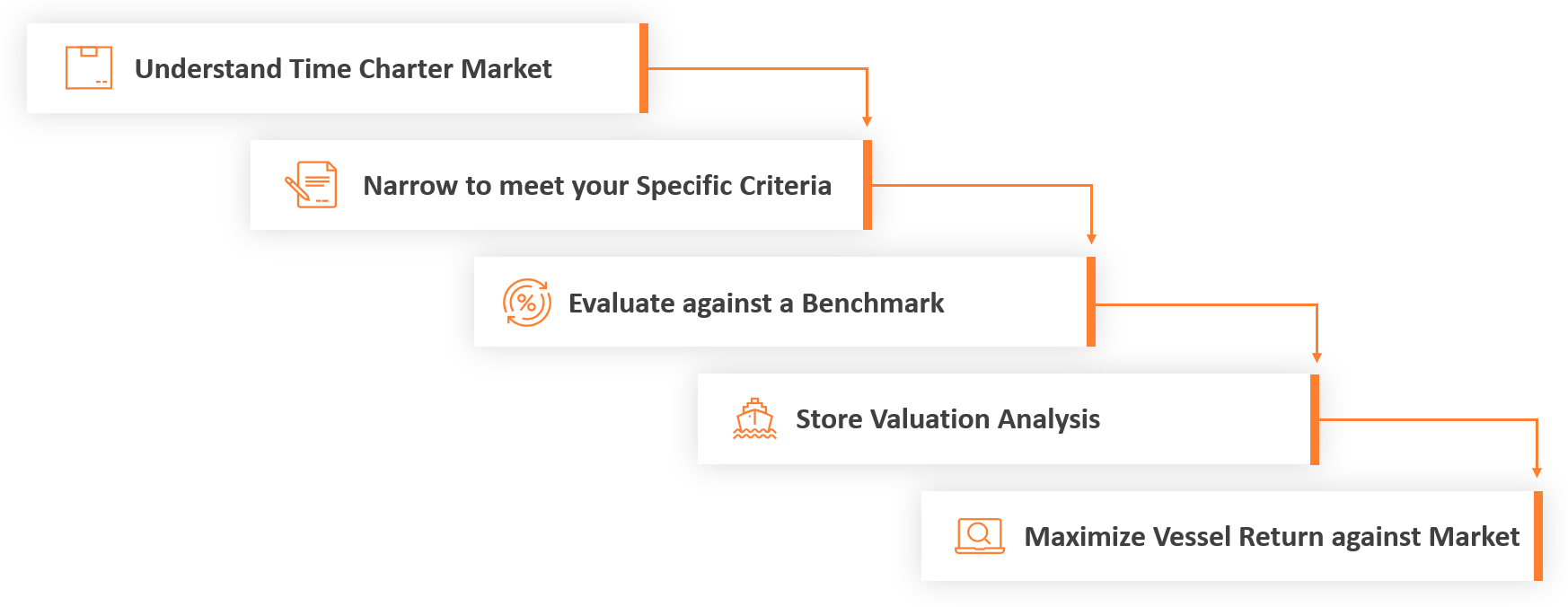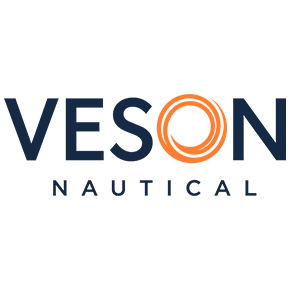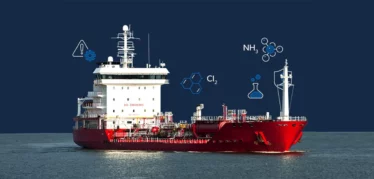In my last post, we explored key challenges holding charterers, freight traders, and other stakeholders back from engaging in efficient and effective pre-fixture analyses. All three of these challenges center around a key element in the pre-trade analysis process: vessel valuation. In other words, evaluating Time Charter vessels to understand which are currently available in the market, calculating how they compare against a standard market vessel, and narrowing these down to action on the best opportunity in a timely fashion.
When it comes to finding the best market opportunities to meet your organization’s unique needs, it is important to have a standard, centralized process that brings all the data you need together into one place and cuts out guess work and time-consuming manual efforts.
With the right process in place for evaluating Time Charter vessels, your team can compare one or more vessels against a benchmark across multiple estimates or market prices quickly to understand the best opportunity.
Through working with dozens of leading maritime organizations on their pre-trade processes, we have identified these 5 steps to help streamline the vessel valuation process for more profitable, timely decision making:

1. Understand TC Market
Use a combination of AIS positional data and Market Broker emails to see not only where vessels are currently positioned, but to evaluate if they are on offer.
2. Narrow Options Based on Specific Criteria
Incorporate your own searching criteria to narrow down those vessels that you would want to evaluate further.
3. Evaluate Against Benchmark
Leverage a digital tool to compare the vessel against a benchmark vessel over a basket of potential fixture opportunities to see how it is correlated, then add in other market vessels to choose which one to take on hire. Compare the same vessel or vessels across a range of potential market Freight and Bunker prices to ensure that the vessel will hold its value even when the market shifts.
4. Save and Store Vessel Valuations
Save and store your valuations in an organized and consolidated digital workspace to be recalled in the future.
5. Maximize Vessel Return
Once fixing a vessel on hire, use the open position based on your own operational data as well as the vessels current AIS position to determine how it will match to cargoes in your book. Compare your TC vessel against others in your fleet, or even market vessels for a given cargo in your book. Or leverage an opportunity cargo to evaluate how you would fare in the market.
For many, pre-fixture analysis and decision-making processes remain clouded by decentralized, disconnected workflows. Creating a strategic process for pre-trade vessel valuation that leverages the right strategy and digital tools for your organization can significantly impact the quality of your trade decisions, containing costs and optimizing marine voyages. Visit this page to learn more about how IMOS can transform your pre-fixture analysis.



 Chris Aversano
Chris Aversano
 Veson Nautical
Veson Nautical
